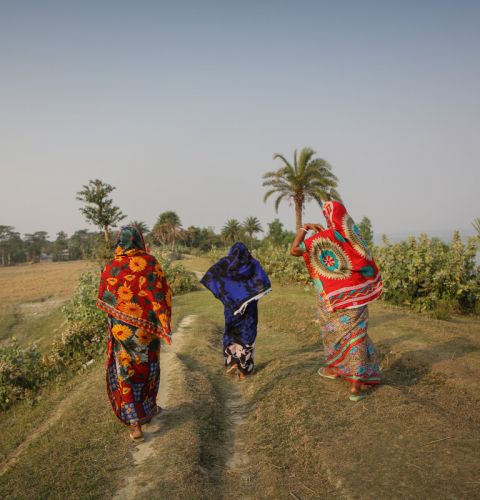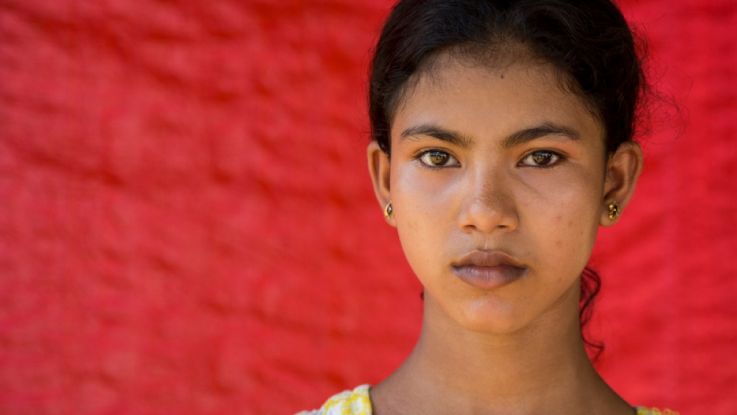Climate change and gender
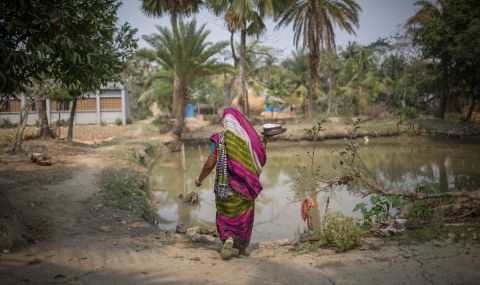
In southern Bangladesh, one of the world’s most disaster-prone areas, climate change has increased the frequency of cyclones, tidal surges, coastal erosion and drought .
Are women and girls most affected by climate change?
Women and girls are more vulnerable to the effects of climate change because:
- They constitute the majority of the world’s poor, who are overall more affected.
- They are more likely to be dependent for their food and income on the land, and natural resources, which are being threatened.
- They are less likely to be in positions of power and/or decision-making roles.
- They are more likely to be responsible within their families for securing water, food and fuel for cooking and heating, which are all being threatened.1 It is often women and girls, for example, who are forced to walk great distances to find water when local sources dry up.
- In developing countries, they tend to be exposed to the negative impacts of disasters, including death and injury. These disasters are becoming more frequent and more severe due to climate change.
- They face a heightened risk of gender-based violence during and following disasters, and when forced to leave their homes due to climate change, become more vulnerable to early marriage, adolescent pregnancy, rape and trafficking.7
The role of gender inequality
Climate change affects women and girls most acutely because it exacerbates the existing outcomes of entrenched gender inequality.
In many contexts, climate-related disasters like floods or drought lead to household livelihood insecurities which lead to girls being taken out of school. Girls may then help to manage the household affairs or are moved into domestic work, which exposes them to risk.
When parents struggle to feed their children, some feel they have no choice but to give their daughters away for early marriage, often resulting in early pregnancy.
And when the worst effects of climate change make land-based work impossible, women are often less able than men to turn to alternative forms of work. Nine in 10 countries worldwide have laws impeding women’s economic opportunities, such as those which bar women from factory jobs, working at night, or getting a job without permission from their husband.2
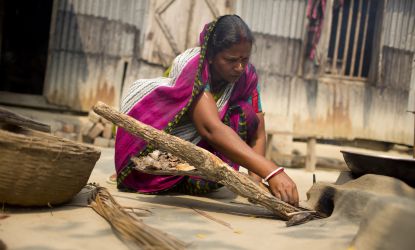
Sabita has now participated in events with world leaders, and works to encourage the participation of women in decision making
Turjoy Chowdhury/ActionAid
How women are leading the fight against climate change
Sabita, 38, is the emergency response leader in her village in southern Bangladesh, one of the most disaster-prone areas in the world. Her region is increasingly experiencing extreme weather, driven by climate change.
Sabita participated in training by ActionAid to lead disaster response programmes and, when a cyclone hit her village in 2013, she sprang into action to help evacuate.
With the support of other women from her village group, Sabita managed to get 500 people to safety. After the cyclone, they began the process of rebuilding and restoring homes and livelihoods.
“Now we are actively working on the field, measuring the loss and supporting the people to get their home back,” she told us.
It’s amazing! We - the women - are really doing something for our locality”.
The impact of women's leadership in communities
Women and girls are most adversely affected by the effects of climate change - but they are also uniquely important to the solution.
Research shows that, when women participate in decision-making at national and community levels, they are key to effective climate change solutions.
Women often have a strong body of knowledge and expertise that can be used in climate change mitigation, disaster reduction and in creating strategies for a more sustainable future.4
Their traditional, cultural roles within families mean they often act as stewards of natural and household resources. Every day, billions of women around the world make decisions that influence the environment, whether it’s as cooks for their families (choosing food and fuel), as farmers (influencing soil carbon emissions), or as consumers (making purchasing decisions).5
These cultural roles position women well to contribute to new strategies for climate-resilient, sustainable livelihoods.
Meanwhile, at the country level, research shows women are powerful agents of change in the fight against climate change: gender-equal representation has led to policy-making with better outcomes for the environment.6 Despite this, the poorest women and girls continue to be excluded from processes to develop national adaptation plans and reduce countries' emissions.
Gender-responsive budgets to ensure that plans are carried out to support gender equality are also missing or lacking from national plans.
What ActionAid is doing to support women and girls' climate resilience
ActionAid is working in the world’s poorest countries to support women to take on leadership roles, and ensure their voices are heard.
As women and girls living in poverty are some of the most affected by the climate crisis, their voices must be central to the discourse surrounding it.
We know that, when women are empowered to participate in decision-making, entire communities benefit. That’s why we put women and girls at the heart of all we do.
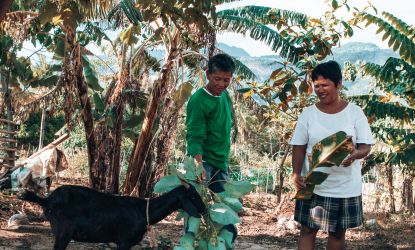
Supporting women's resilience to climate change
Natividad (pictured right) is from the Philippines, a country with a high risk of recurring disasters - most recently Typhoon Haiyan. She is President of a Farmers and Fisherfolks Women’s Association and knows the crisis climate change is presenting to her community.
“Due to climate change, the farmers are struggling,” she says. “Our crops and plants are damaged. Our products are low in production.
You can easily see the impacts of climate change, looking at the surroundings – even the pineapples, the harvest is too small and poor quality.”
ActionAid is supporting women like Natividad to build their resilience to climate change, take leadership positions, and access new sources of income by learning skills like handicraft.
“Women should be leaders because they have the right to lead,” Natividad says. “We are aware of our rights, and we also have talents and skills that men do not have.”
Natividad and her community are finding new, sustainable sources of income to combat the effects of climate change
Clare Douglas/ActionAid
Footnotes
- 1https://www.un.org/womenwatch/feature/climate_change/downloads/Women_and_Climate_Change_Factsheet.pdf
- 7https://care.exposure.co/far-from-home
- 2https://www.undp.org/content/dam/undp/library/gender/Gender%20and%20Environment/UNDP%20Linkages%20Gender%20and%20CC%20Policy%20Brief%201-WEB.pdf
- 4https://www.un.org/womenwatch/feature/climate_change/downloads/Women_and_Climate_Change_Factsheet.pdf
- 5https://openknowledge.worldbank.org/bitstream/handle/10986/27356/658420REPLACEM00Box374367B00PUBLIC0.pdf?sequence=1&isAllowed=y
- 6https://openknowledge.worldbank.org/bitstream/handle/10986/27356/658420REPLACEM00Box374367B00PUBLIC0.pdf?sequence=1&isAllowed=y
Page updated 6 February 2025
